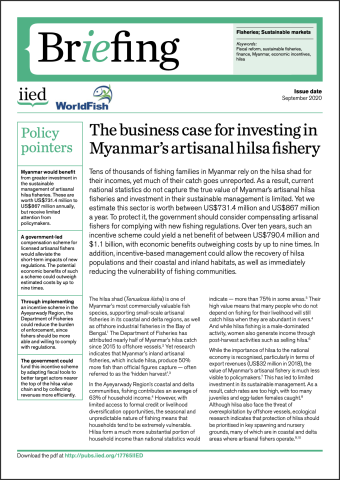
Tens of thousands of fishing families in Myanmar rely on the hilsa shad for their incomes, yet much of their catch goes unreported. As a result, current national statistics do not capture the true value of Myanmar’s artisanal hilsa fisheries and investment in their sustainable management is limited. Yet we estimate this sector is worth between US$731.4 million and US$867 million a year. To protect it, the government should consider compensating artisanal fishers for complying with new fishing regulations. Over ten years, such an incentive scheme could yield a net benefit of between US$790.4 million and $1.1 billion, with economic benefits outweighing costs by up to nine times. In addition, incentive-based management could allow the recovery of hilsa populations and their coastal and inland habitats, as well as immediately reducing the vulnerability of fishing communities.




